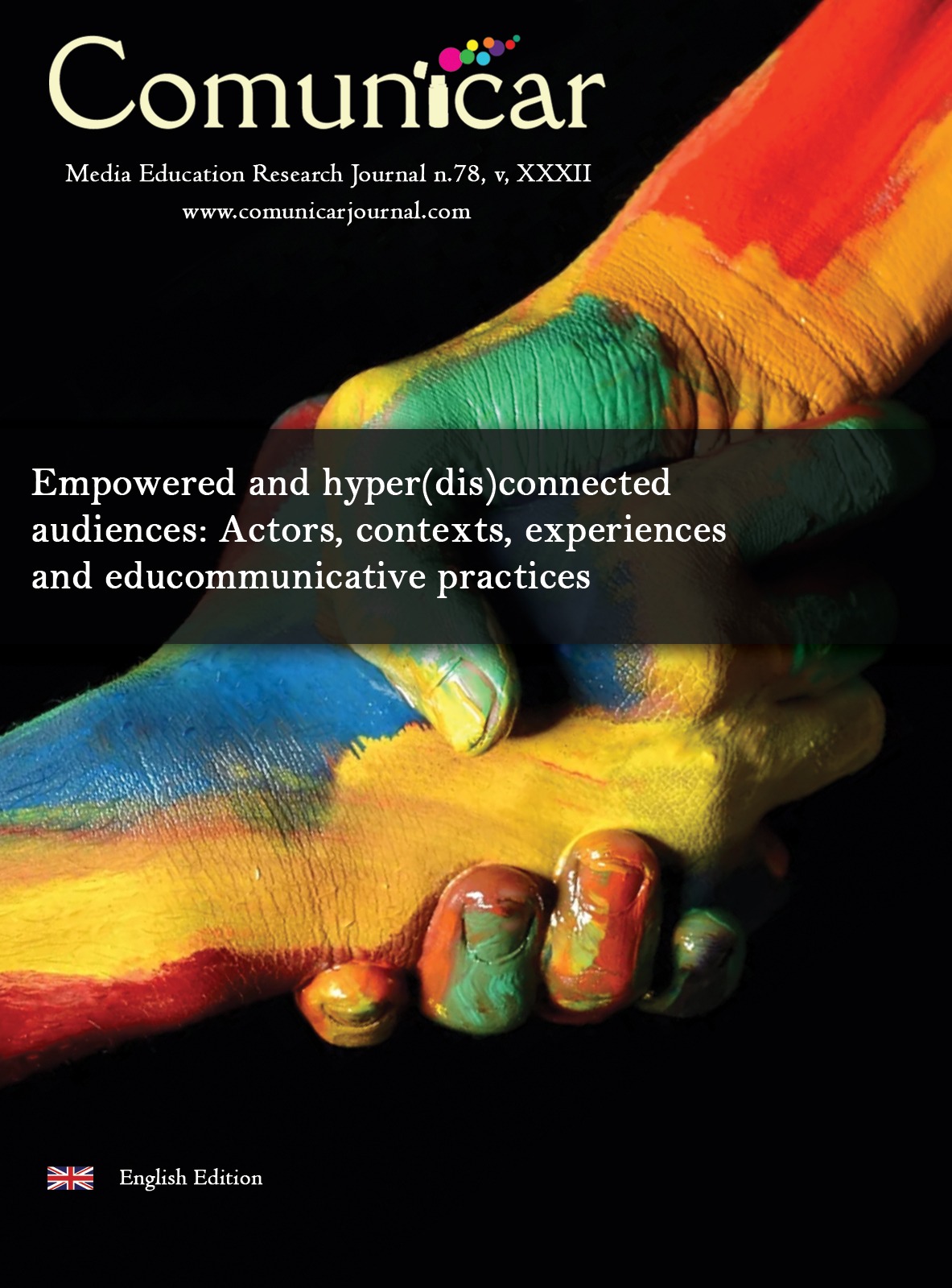Application and challenges of eye tracking technology in Higher Education
IF 5.1
1区 文学
Q1 COMMUNICATION
引用次数: 0
Abstract
Advances in neuro-technology provide new insights into how individual students learn in educational contexts. However, applying it poses challenges for teachers in natural settings. This paper presents an example of the use and applicability of eye-tracking technology in Higher Education. We worked with a sample of 20 students from three universities (Burgos and Valladolid in Spain and Miño in Portugal). The objectives were: (1) to determine whether there were significant differences in indicators of cognitive effort (FC, FD, SC, PD, VC) found with eye-tracking technology between students with and without prior knowledge; (2) to determine whether there were clusters of learning behavior patterns among students; and (3) to analyze differences in the visualization of behavior patterns. A quasi-experimental design without a control group and a descriptive design were used. The results indicated significant differences in learning outcomes between students with and without prior knowledge. In addition, two clusters were found in indicators of cognitive effort. Finally, a comparative analysis of learning behavior patterns between students in cluster 1 vs. cluster 2 was performed. Eye-tracking technology makes it possible to record large data about the learning process. However, using it in natural educational settings currently requires teachers to have technological and data mining skills. Los avances neurotecnológicos están posibilitando en los contextos educativos nuevos conocimientos sobre la forma de aprender de cada estudiante. No obstante, su aplicación plantea retos para la docencia en contextos naturales. En este trabajo se presenta un ejemplo de uso y aplicabilidad de la tecnología de seguimiento ocular en el ámbito de la Educación Superior. Se trabajó con una muestra de 20 estudiantes de tres universidades (Burgos y Valladolid en España y Miño en Portugal). Los objetivos fueron: 1) comprobar si existían diferencias significativas en indicadores de esfuerzo cognitivo (FC, FD, SC, PD, VC) hallados con la tecnología de seguimiento ocular entre estudiantes con y sin conocimientos previos; 2) comprobar si existían clústeres de patrones de conductas de aprendizaje entre los estudiantes; 3) analizar diferencias en la visualización de los patrones de conducta. Se utilizó un diseño cuasiexperimental sin grupo control y un diseño descriptivo. Los resultados indicaron diferencias significativas entre los estudiantes con y sin conocimientos previos respecto de los resultados de aprendizaje. También, se hallaron dos tipos de clústeres en los indicadores de esfuerzo cognitivo. Finalmente, se efectuó un análisis comparativo sobre los patrones de conducta de aprendizaje en estudiantes del clúster 1 vs. clúster 2. El uso de la tecnología de seguimiento ocular posibilita el registro de un gran volumen de datos respecto del proceso de aprendizaje. No obstante, en la actualidad su uso en contextos educativos naturales exige al profesorado conocimientos tecnológicos y de minería de datos.眼动追踪技术在高等教育中的应用与挑战
神经技术的进步为个体学生如何在教育环境中学习提供了新的见解。然而,应用它对自然环境中的教师提出了挑战。本文介绍了眼睛跟踪技术在高等教育中的使用和适用性的一个例子。我们与来自三所大学(西班牙的布尔戈斯和巴利亚多利德以及葡萄牙的米诺)的20名学生的样本合作。目的是:(1)确定在有或没有先验知识的学生中,使用眼睛跟踪技术发现的认知努力指标(FC、FD、SC、PD、VC)是否存在显著差异;(2) 确定学生中是否存在学习行为模式集群;和(3)分析行为模式可视化方面的差异。使用了没有控制组的准实验设计和描述性设计。结果表明,有或没有先验知识的学生在学习结果上存在显著差异。此外,在认知努力的指标中发现了两个集群。最后,对1组与2组学生的学习行为模式进行了比较分析。眼睛跟踪技术使记录有关学习过程的大量数据成为可能。然而,在自然教育环境中使用它目前需要教师具备技术和数据挖掘技能。神经技术的进步正在教育背景下使人们能够对每个学生的学习方式有新的了解。然而,它的应用对自然环境中的教学提出了挑战。本文介绍了眼睛跟踪技术在高等教育领域的应用和适用性。对来自三所大学(西班牙的布尔戈斯和巴利亚多利德以及葡萄牙的米诺)的20名学生进行了抽样研究。目的是:(1)验证在有或没有先验知识的学生中,使用眼睛跟踪技术发现的认知努力指标(FC、FD、SC、PD、VC)是否存在显著差异;2) 检查学生是否存在学习行为模式集群;3) 分析行为模式可视化的差异。采用无对照组的准实验设计和描述性设计。结果显示,有或没有先前知识的学生在学习成绩方面存在显著差异。此外,在认知努力指标中发现了两种类型的聚类。最后,对1组和2组学生的学习行为模式进行了比较分析。使用眼睛跟踪技术可以记录与学习过程有关的大量数据。然而,目前在自然教育环境中使用它们需要教师掌握技术和数据挖掘知识。
本文章由计算机程序翻译,如有差异,请以英文原文为准。
求助全文
约1分钟内获得全文
求助全文
来源期刊

Comunicar
Multiple-
CiteScore
10.10
自引率
5.40%
发文量
40
审稿时长
20 weeks
期刊介绍:
Comunicar specialized in educommunication: communication and education, ICT, audiences, new languages...; monographs specialized in current issues. Double format: printed and online; digitally, accessible in full text, free of charge, for the entire scientific community and researchers around the world. Coeditions printed in Spanish and English for the whole world. Published by Oxbridge Publishing House which collaborates with many international centres and universities.
 求助内容:
求助内容: 应助结果提醒方式:
应助结果提醒方式:


